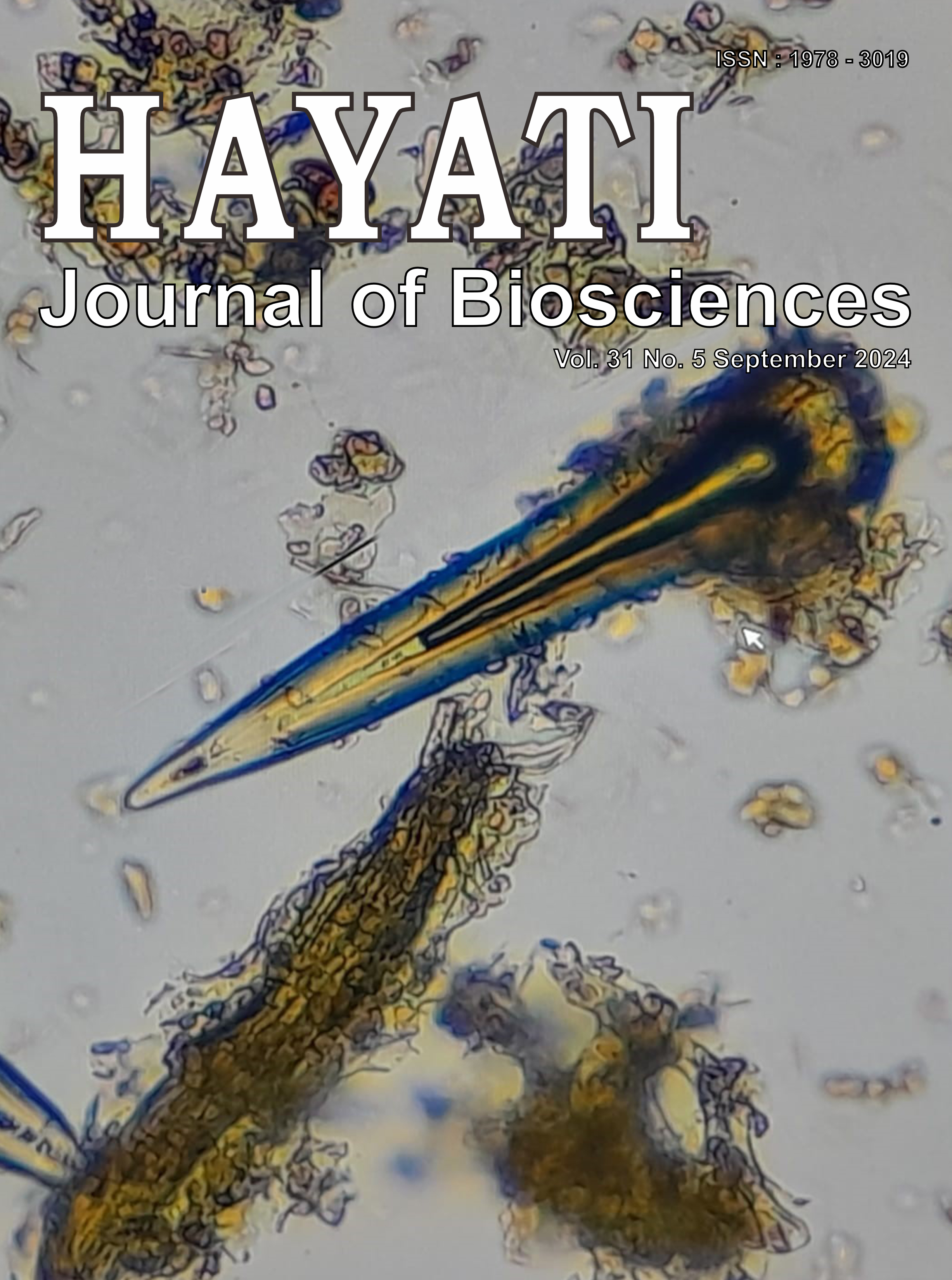Genetic Relationship and the Putative Occurrence of A Species Complex Within the Indonesian Calotes (Daudin, 1802) (Squamata, Agamidae) Genus Based on COI Gene Sequences
Abstract
The Calotes genus presents a challenge due to the complexity of its species. However, research on the cryptic species complex within the Indonesian Calotes genus is still lacking. This study aims to determine the extent of genetic relationships and assess the potential existence of a species complex within the Indonesian genus Calotes (Daudin, 1802) (Squamata, Agamidae) using the partial Cytochrome c Oxidase Subunit 1 (COI) gene sequence as a molecular marker. Samples of the Indonesian Calotes genus in this study were collected from South Lampung (Lampung), Bogor (West Java), and Langkat (North Sumatra). By aligning 582 bp sequence similarities with reference sequences in GenBank, we confirmed that seven out of eight samples analyzed belonged to Calotes vultuosus, while one sample was identified as Calotes versicolor. The identity values ranged from 96 to 100%. The C. vultuosus samples in this study displayed lower genetic distances, ranging from 0 to 3%, with the reference C. vultuosus sequence from Indonesia compared to the reference sequence from India, which ranged from 6 to 9%. Phylogenetic tree reconstruction, utilizing both maximum likelihood with IQ-Tree and Bayesian Inference with BEAST methods, further supports these findings. It reveals distinct groupings between C. vultuosus samples from Indonesia and India. These results suggest the potential occurrence of a species complex within the Indonesian genus Calotes. Furthermore, the inclusion of eight COI gene sequences from two Calotes species in the GenBank database has the potential to confirm the existence of previously undocumented species in Indonesia.
Downloads
Copyright (c) 2024 Muhammad Indra Maulana, Suhendra Pakpahan, Andy Darmawan, Yanti Ariyanti

This work is licensed under a Creative Commons Attribution-NonCommercial 4.0 International License.
HAYATI J Biosci is an open access journal and the article's license is CC-BY-NC. This license lets others distribute, remix, tweak, and build upon author's work, as long as they credit the original creation. Authors retain copyright and grant the journal/publisher non exclusive publishing rights with the work simultaneously licensed under a https://creativecommons.org/

























.png) IPB University
IPB University Department of Biology
Department of Biology The Indonesian Biological Society
The Indonesian Biological Society 

